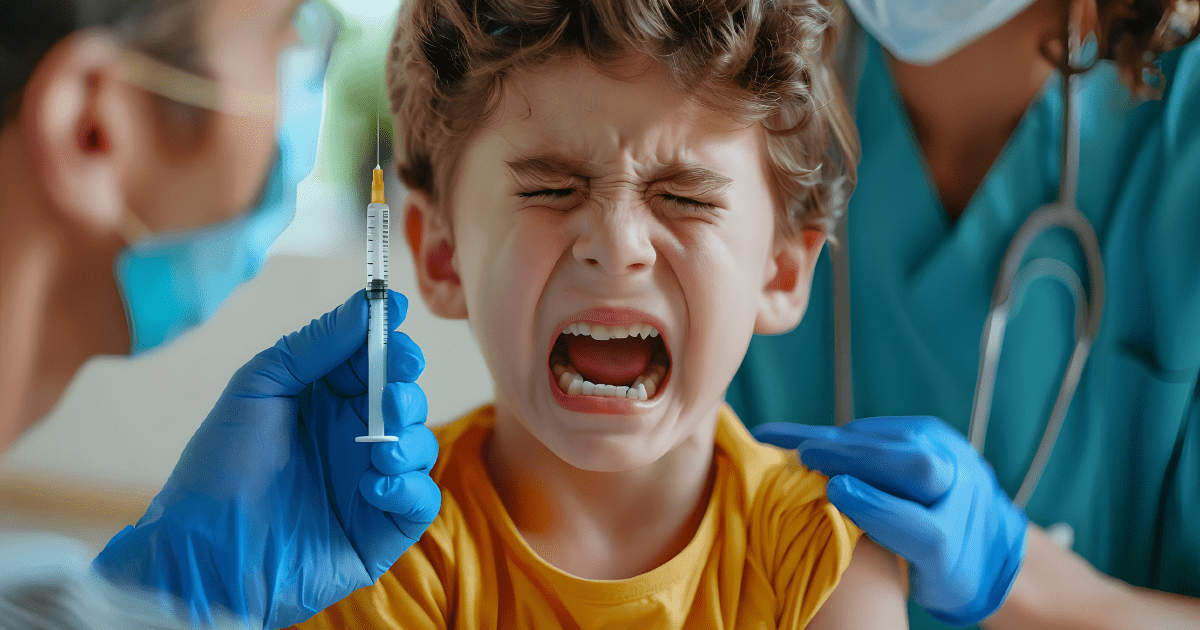

Why Do Shots Hurt? A Breakdown of Causes and Solutions
Shots are a common part of medical care, whether you're receiving a vaccine or a routine medication. Yet, many people wonder, "Why do shots hurt?" Understanding the reasons behind injection pain can help patients, caregivers, and first-time injectors manage discomfort and anxiety. Let's explore the causes and solutions to make the experience more bearable.
Understanding Why Shots Hurt
Shots can cause discomfort for several reasons. If you’ve ever wondered why do shots hurt, you’re not alone. While each person may experience the pain differently, certain factors commonly contribute to the sensation. By recognizing these causes, you can take steps to alleviate the pain and make injections more manageable.
- Needle Size: The thickness (gauge) and length of the needle can significantly impact the level of pain felt during an injection. A thinner needle tends to cause less discomfort. However, the required needle size varies depending on the medication and injection site, sometimes necessitating a larger gauge.
- Muscle Tension: Tensing up before or during an injection can increase discomfort. Relaxing the muscle where the shot will occur can help minimize pain. Methods like deep breathing or guided imagery can assist in reducing muscle tension.
- Anxiety: Fear of needles, scientifically known as trypanophobia, affects a large portion of the population. This phobia can heighten the perception of pain and even cause avoidance of necessary medical treatments. Techniques such as mindfulness, cognitive behavioral therapy, and gradual exposure can help manage this anxiety.
Dealing with Anxiety
Trypanophobia, or the intense fear of needles, can actually heighten your perception of pain during injections and medical procedures. If you've ever asked yourself why do shots hurt more when you're anxious, this fear may be part of the reason. Gaining insight into the psychological reasons behind this fear is crucial for effectively managing it. Resources from the Cleveland Clinic offer valuable information and practical coping strategies specifically designed to address trypanophobia. By exploring these helpful tools and understanding your own triggers, you can make receiving injections feel significantly less overwhelming and much more manageable.
- Poor Technique: Improper injection technique - such as using the wrong angle or depth - can increase pain. For caregivers and first-time injectors, proper training is essential. The Mayo Clinic’s FITTER Forward guidelines emphasize how correct site rotation and needle placement can reduce pain and improve outcomes. Additionally, Cleveland Clinic’s guide on subcutaneous injections explains how choosing the correct needle size and angle helps minimize discomfort.
- Lack of Preparation: Not preparing the skin or environment can lead to increased pain and anxiety. If you're asking why do shots hurt more sometimes than others, poor preparation may be part of the reason. Cleaning the injection site with an antiseptic wipe and allowing it to fully dry helps reduce stinging and lowers the risk of infection. The Cleveland Clinic also recommends using ice or a topical numbing agent to dull the area before and after the shot.
Skincare Preparation
Prepping the area is key. Ensure cleanliness to prevent infection and consider topical anesthetics or ice to numb the surface. These small steps can lead to a more comfortable shot experience.
- No Distraction: Without a distraction, your attention focuses solely on the injection, intensifying the perception of pain. Engaging in activities like watching a video, listening to music, or chatting can divert attention and reduce discomfort.
Technological Solutions: Digivibe
Recent advancements offer tools like Digivibe, which uses vibration technology to help reduce injection pain. If you're wondering why do shots hurt more for some people than others, part of the answer lies in how the brain processes pain signals. This device works by stimulating the nerves around the injection area, creating a sensation that distracts from the shot pain itself. By integrating tools like Digivibe, patients and caregivers can further ease the discomfort of injections and improve the overall experience.
Learn more about Digivibe: a science-backed tool to reduce needle pain.
The Role of Perception
Pain is as much psychological as it is physical. Your expectation of pain can alter your actual experience. Educating yourself on the injection process and reshaping your mindset can transform your perception of the event, ultimately reducing pain. The CDC offers educational materials that help in understanding why shots don’t always have to be painful.
Techniques for Reframing
Changing how you view the process works wonders. Understanding why do shots hurt from both a physical and psychological perspective can reduce fear before it begins. Education, reassurance from medical professionals, and practice with non-painful procedures can reshape one's perception, making injections less intimidating.
Conclusion
While shots might be a necessity in healthcare, they don't have to cause undue stress or discomfort. By understanding the causes of pain and employing solutions ranging from proper technique to technological aids like Digivibe, patients and caregivers can enhance the injection experience. Take a proactive approach to pain management by exploring our full range of informative Digivibe blog posts for additional insights.
Share:
0 comments
Disclaimer: This blog is intended for general informational purposes only and does not constitute or substitute for professional medical advice, diagnosis, or treatment. Suthe does not provide medical services, and no content herein should be used to make healthcare decisions without first consulting a licensed healthcare provider. Always seek the guidance of a qualified medical professional regarding your health, wellness practices, or the use of any medical or wellness devices.
